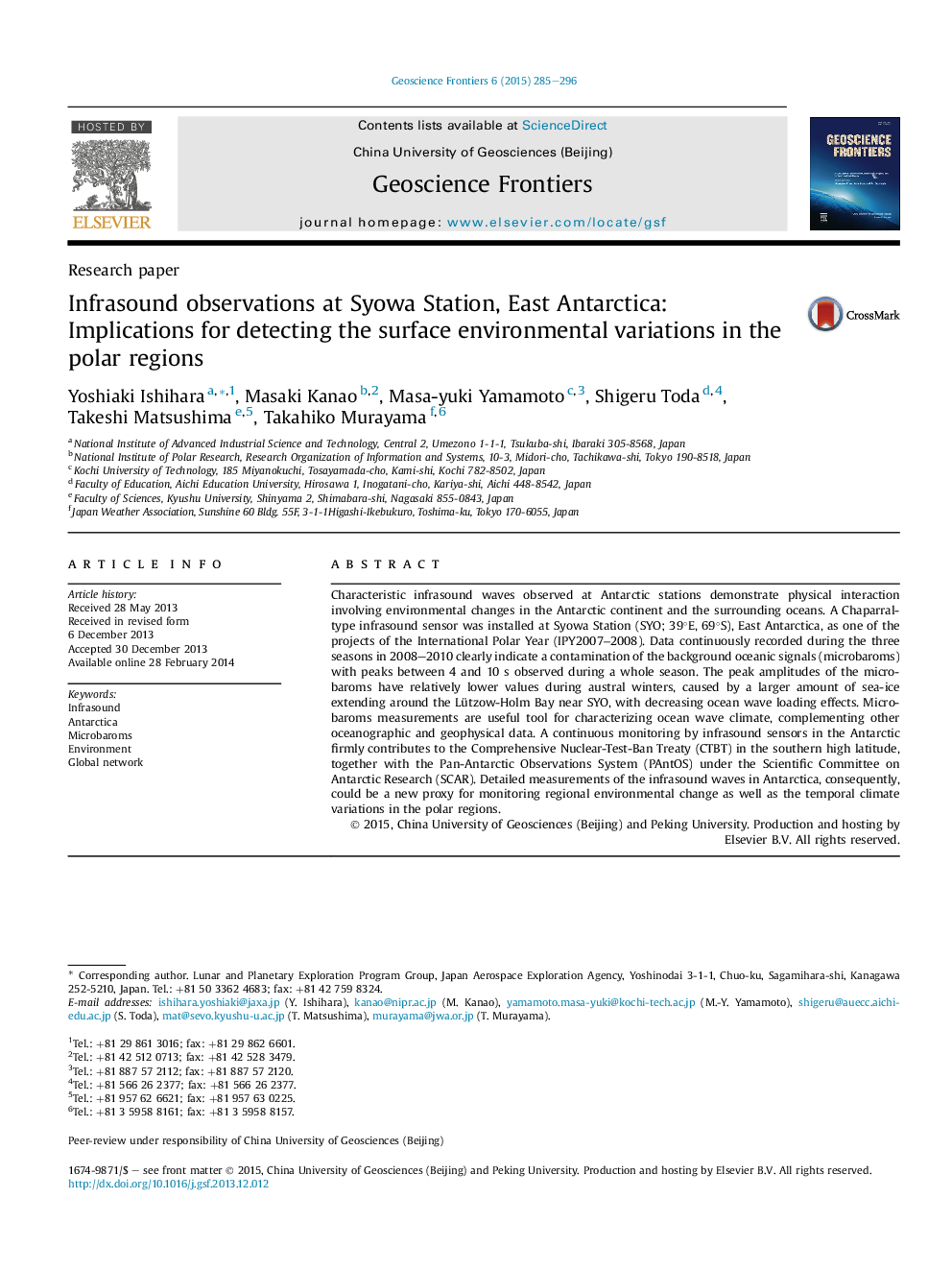| Article ID | Journal | Published Year | Pages | File Type |
|---|---|---|---|---|
| 4681637 | Geoscience Frontiers | 2015 | 12 Pages |
•Peak amplitudes of microbaroms lower during austral winters.•Microbaroms measurements are useful tool for characterizing ocean wave climate.•Infrasound waves as proxy for regional environmental change.
Characteristic infrasound waves observed at Antarctic stations demonstrate physical interaction involving environmental changes in the Antarctic continent and the surrounding oceans. A Chaparral-type infrasound sensor was installed at Syowa Station (SYO; 39°E, 69°S), East Antarctica, as one of the projects of the International Polar Year (IPY2007‒2008). Data continuously recorded during the three seasons in 2008–2010 clearly indicate a contamination of the background oceanic signals (microbaroms) with peaks between 4 and 10 s observed during a whole season. The peak amplitudes of the microbaroms have relatively lower values during austral winters, caused by a larger amount of sea-ice extending around the Lützow-Holm Bay near SYO, with decreasing ocean wave loading effects. Microbaroms measurements are useful tool for characterizing ocean wave climate, complementing other oceanographic and geophysical data. A continuous monitoring by infrasound sensors in the Antarctic firmly contributes to the Comprehensive Nuclear-Test-Ban Treaty (CTBT) in the southern high latitude, together with the Pan-Antarctic Observations System (PAntOS) under the Scientific Committee on Antarctic Research (SCAR). Detailed measurements of the infrasound waves in Antarctica, consequently, could be a new proxy for monitoring regional environmental change as well as the temporal climate variations in the polar regions.
Graphical abstractFigure optionsDownload full-size imageDownload as PowerPoint slide
